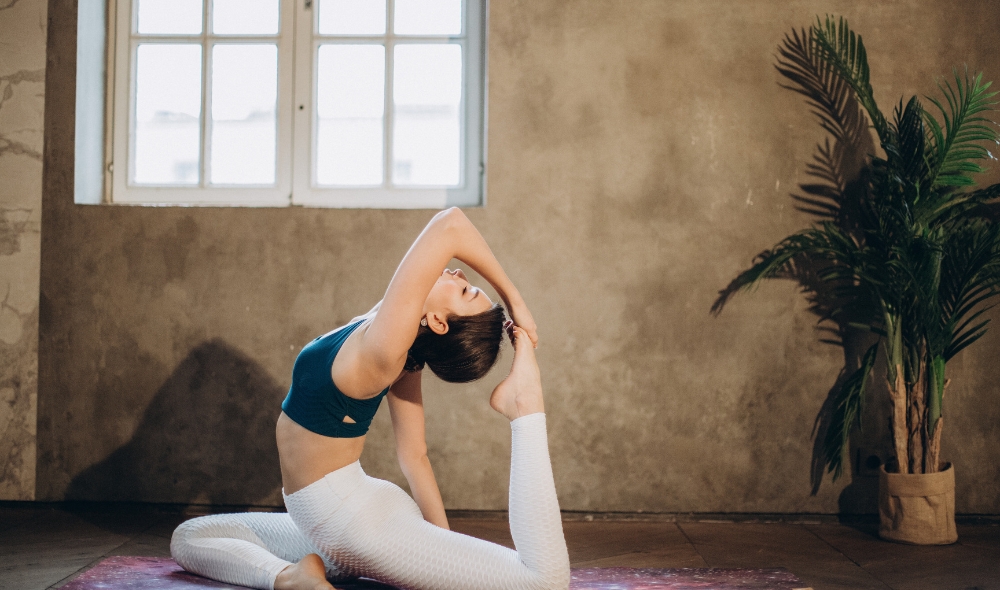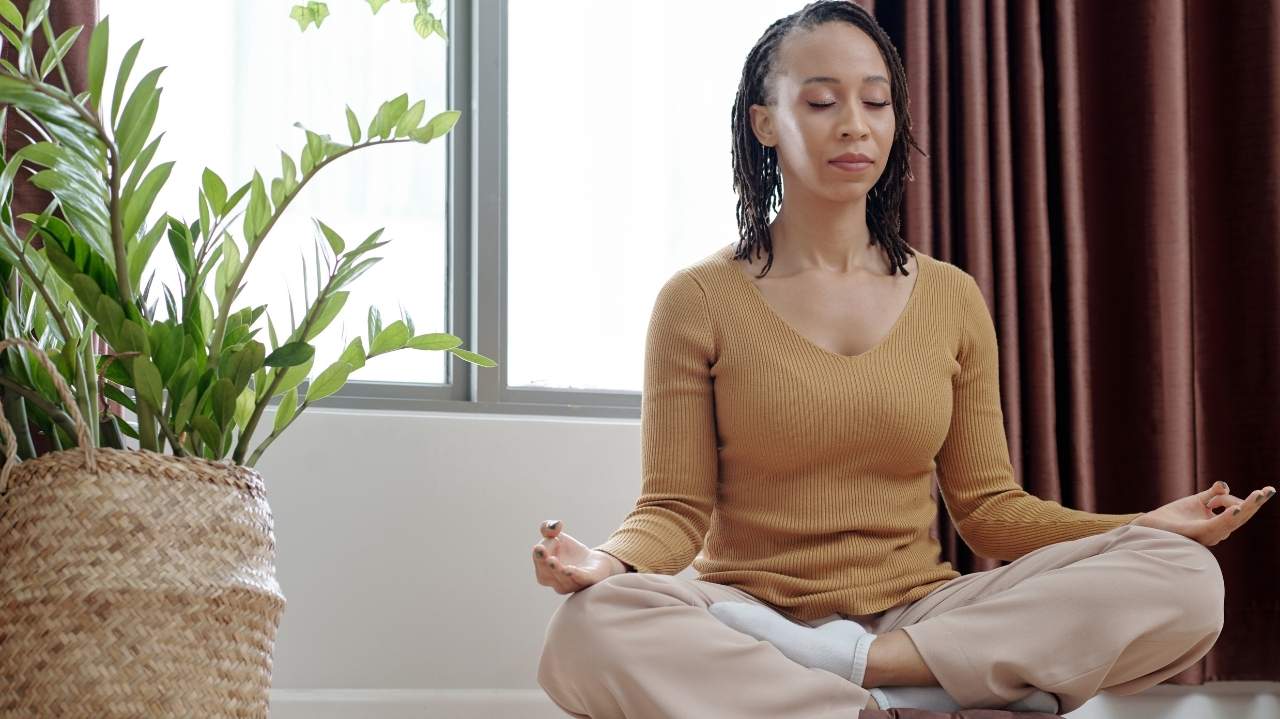Buti yoga is not your typical traditional yoga session—it’s a vibrant mix of tribal dancing, plyometrics, and primal movements that awaken both body and mind. Founded in 2011 in the US by celebrity trainer and wellness expert Bizzie Gold, this female-centric practice was designed to unlocking your inner power while creating a deep mind-body connection.
In my first class, I remember the pulsating beats of hip hop and remixed radio hits filling the room, as we flowed from sun salutations into explosive cardio-intensive workout bursts. The tribal dance moves and intentional shaking felt like a transformative blend of strength, spine alignment, and shakti-awakening.
The signature Spiral Structure Technique (SST) works deep into the core, focusing on abdominal groups, sculpting, toning, and stability. As a mums-friendly option, it’s brilliant for postural strength and core-stabilising to prevent pain or injury. It’s common to feel both calm and wildly energising after these high-intensity sessions.
I’ve seen beginners arrive with uncertainty, a mat, and a mindset ready for change—and leave with confidence, self-love, and a sense of community. Guidance from teachers helps you navigate each stage, whether you’re here to burn calories, strengthen muscles, or simply liberate emotions through pelvic spiralling and goddess poses.
Every session is a celebration—women, men, and inclusive groups come together in a friendly, motivating space. You might laugh, cry, or just breathe deeply as the upbeat soundtrack and soulful flow work to release blockages in your chakras and boost endorphins and oxytocin.
Whether you’re practising in midriff-exposing shorts and sports bras or comfy clothing, the excitement is the same. This isn’t just a workout—it’s an empowering journey of self-acceptance, positivity, and bonding, all while dancing, sweating, and awakening your hidden potential.
What is buti yoga?

Buti yoga is a unique blend of Indian-Moroccan influences, where the word “Buti” means a cure for something hidden or secret within. Founded in 2010 by personal development coach and celebrity trainer Bizzie Gold, it’s a movement style designed to heal the body from within. Today, more than 1,300 qualified instructors across the globe guide celebrity fans like Jennifer Love-Hewitt through its energising practices.
Under the guidance of master trainer Sara Fakih, I experienced how this practice merges vinyasa with creative flow, strength conditioning, cardio bursts, and tribal, primal movement flows. The dynamic asanas and poses, mixed with fun challenges like reverse burpees and goddess stances, keep your pulsating muscles engaged while stabilising your core. It’s more than a workout—it’s a cult following in motion.
What is buti yoga supposed to do?

Buti yoga is a unique practice that’s designed to strip away everything holding you back—physically and mentally—and transform you from within. In a class, you’re taught to move in ways that not only help you lose weight, but also tone and strengthen muscles through dynamic cardio bursts. Most sessions are a 50-60 minute class focused on core engagement, leaving you feeling strong and flexible.
From my own experience, after just a few weeks of regular practise, I could see the difference in my body—a friend at Gold’s Gym even joked I was on my way to a six pack. I believe this style blends different forms of yoga to strengthen, lengthen, and protect against injury. Done consistently, it’s not just a workout—it’s a full-body awakening.
What are the principles of buti yoga?

Buti yoga, founded by Bizzie Gold, blends movement science with ancient practices to awaken Kundalini energy at the base of the spine. Using the SST (Spinal Structure Technique), it moves beyond linear and square motions into spiral and spiralling flows that engage the core stabiliser muscles, activate deeper parts of the pelvic floor, and support vital organs. Unlike typical exercises that may ignore certain muscle groups or risk overworking them, it offers sequences that balance strength, flexibility, and concentration.
From my own experience, its popular choice among women—especially post-pregnancy—isn’t just hype. With stabilising work for diastasis recti (abdominal separation after birth), it’s a form of exercise often recognised by a GP or midwife for rebuilding strength. The technique focuses on feminine energy while keeping the body safe, making it a holistic way to restore balance and confidence after childbirth.
Buti yoga: Tribal dance
Buti yoga blends tribal rhythms with dynamic dance moves and creative sequences on the mat. Inspired by ancient ceremonies and shamanic traditions, this style isn’t just exercise—it’s healing from within. I remember my first class with instructor Fakih, where even beginners felt safe to explore movement that helps break barriers and feel free.
In Buti, the choreography flows without rigid rules, sometimes counting to eight while letting the body move freely. Often done barefoot, it creates a grounding connection to the earth, releasing stored emotions and delivering a personal message of self-discovery. It’s like stepping into a formal ritual that feels a lot like freedom.
Buti yoga: Plyometrics
In a buti yoga class, the plyometric exercises bring a rush of energy through fast, explosive, and jumping movements. I’ve found that these bursts make my muscles contract and immediately lengthen, creating a powerful rhythm that feels both challenging and freeing. The goal of this training is to strengthen the body’s ability to produce force quickly, making every session feel alive.
These cardio-intense forms keep the heart rate high, helping to burn calories and increase the resting metabolic rate whilst still being rooted in the flow of yoga. Personally, I love how this blend transforms not just my strength but also my endurance, giving me a sense of balance that’s hard to find in other workouts.
Buti yoga: Poses
Buti yoga is a unique style of yoga that blends modern movement with traditional elements, making each class a fresh journey on the mat. In my own practise, I’ve found that the fluid poses are carefully incorporated to connect breath with motion, creating a safe space for self-expression. The focus isn’t just on the workout but also on coming into stillness, taking the time to slow down when needed, especially with yin practice elements. It’s important to allow the body to rest, often returning to child’s pose between movements, much like my sessions with teacher Fakih, where we honour both energy and rest.





